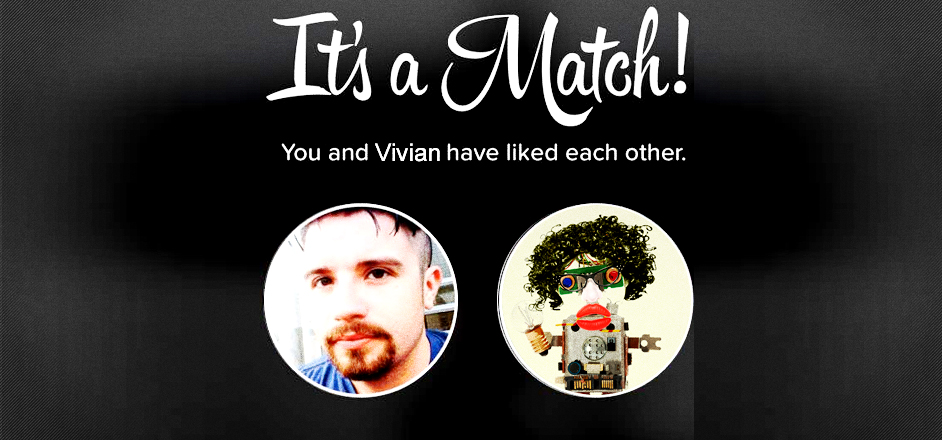My friend Damien spends hours flipping through photos of the lovely ladies his city has to offer. His confidence climbs and his cynical view of the single life subsides as he matches with beautiful brunettes, fiery redheads and bubbly blondes. He once thought that online dating was a waste of time, but the abundance of babes at his fingertips and the sheer rush of making a connection got him hooked. However, his high hopes of a platform full of romantic potential and an active dating life were dashed when he discovered the truth about his matches. They’re not gorgeous girls looking for a companion — they’re sex bots looking for credit card numbers.
As of late, these alluring automations are dominating online dating. Sex bots — or artificially-intelligent programs posing as real people — are designed to seduce lonely hearts into coughing up some cash. The scammers who create these fake accounts have a simple formula: invent a name, steal a few photos from an attractive woman’s Instagram and then exploit those vulnerable moments of false hope right after a man gets a match. If you’ve ever given online dating a try, you’ve probably met a few of these flirtatious machines.
According to the tech analyst firm, Are You a Human, an astonishing 59 percent of online traffic, including dating app activity, is generated by bots. They’ve been increasingly infiltrating nearly every dating service, but their prevalence hadn’t come to public attention until only recently, when a massive hack on the dating site Ashley Madison revealed the company’s widespread use of sex bots to boost membership sales.
The Ashley Madison scam targeted men with free accounts, sending them seductive come-ons from bots posing as attractive women — but if a user wanted to reply back to a woman’s messages, he had to buy credits. Reporters who exposed the site’s use of fake accounts discovered that 80 percent of initial purchases on Ashley Madison were made by a male user trying to communicate with a bot. Their investigation resulted in estimates that of the 5.5 million female profiles on the site, as few as 12,000 were real women.
The Ashley Madison con not only revealed that bots may exceedingly outnumber humans on many popular dating apps, but also that sometimes, the company itself is the source of these automations. If the platform can get a guy on a site for free, flood him with hotties who want to chat, then make him pay for the privilege, profits will shoot up quicker than their clients’ stiffies.
Of course, bots aren’t always corporate execs attempting to boost their site’s male-to-female ratio. Just as often, they’re outside con artists collecting data and seeking out credit card information. This can be as obvious as a dime piece filling your inbox with promotional links or luring you to a pornographic site that requires a credit card to “verify your age.” But if the bot’s designers did their jobs properly, the automation’s conversation can be convincing.
"A lot of people think this only happens to dumb people, and they can tell if they're talking to a bot," Steve Baker, a lead investigator for the Federal Trade Commission, tells The Rolling Stone. "But you can't tell. The people running these scams are professionals, and they do this for a living."
Intricate bots have the ability to learn and remember user details like name, age, location, and likes. They may be programmed with tons of code that tell the bot how to respond to millions of scenarios. Numerous guides on how to distinguish human from machine offer newly necessary knowledge for online daters, such as tactics to outsmart these automations.
One simple strategy involves employing pure gibberish. For example, if you say, "I love jkhfkdjh," the bot might stupidly respond, "What do you love about jfhfkdjh?” Another approach is to ask the bot to spell words backwards, or to use a lot of pronouns like "it." If you ask a chatbot about what city it lives in, and then ask, “What is your favorite part of it?” The bot has to understand that 'it' means the city and then has to develop a response about its favorite part. These strategies are effective enough to unveil the software behind the conversation, which is particularly helpful on Tinder, where bots have become a pervasive issue.
Symantec, a computer security firm, conducted a study on fake Tinder profiles, and discovered that the majority of matches are often bots. This should be no surprise to the seasoned men of Tinder. It certainly isn’t to Damien, who deleted the app after growing sick of the platform’s disappointing payoff.
“I uninstalled Tinder because I only ever got messaged by bots. It's hell on your self-esteem when the only profiles that swipe right are fucking computer programs,” he says.
Now, Damien’s back to dating the old-fashioned way, going out to the bars and trying his hand with the hotties. It’s not necessarily more successful, as he gets shot down by stuck-up sorority girls all the time. But he’ll take flesh and blood bitches over hot to trot bots any day.



Leave a Reply